With the death of third-party cookies and the evolution of data privacy and legislations such as GDPR and CCPA, companies need to be aware of these updates in order to future-proof their technology.
As a result, companies should rely instead on first-party cookies to track their user activities from the cookies created on their own domain.
First-party identity resolution, or the ability to stitch all customer data into accurate profiles facilitates for marketers and advertisers to create more powerful marketing campaigns, optimize ad spend and deliver flawless customer experience.
What’s the difference between first-party cookies and third-party cookies?
First-party cookies are cookies created and stored by the website that the user visits directly. They permit website owners to gather analytics data, recall language settings and perform functions that assist in building a practical user experience.
For first-party cookies, engagement occurs on the same website, app or endpoint.
However, third-party cookies are created by any domain other than the website. Examples of it can be cross-site tracking, retargeting (ads) and ad-serving (display ads).
The table below shows how first-party cookies differ from third-party cookies.
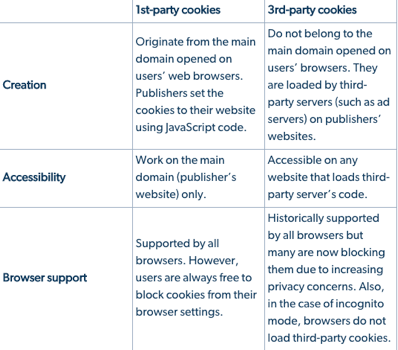 Source: us.epsilon.com
Source: us.epsilon.com
Why are third-party cookies dying?
A significant number of consumers are not comfortable with the way their data is shared. They want more transparency, choice and control over how their data is used.
As the emphasis on user privacy is growing, third-party cookies are becoming a major threat to targeted advertising and marketing.
Safari and Mozilla don’t support third-party cookies any longer and these cookies will be even blocked by Google Chrome in 2022.
What’s next?
Without Chrome-based third-party cookies data, you will still be able to make use of Google Ads targeting, which will be powered by Chrome’s first-party cookies and the Privacy Sandbox tools.
Instead of relying on cookies, Privacy Sandbox uses anonymized signals within a person’s Chrome browser.
How to drive prospects to opt in and make use of first-party data?
1. Browser push notification
SEO, PPC or organic social media efforts driving prospects to your website where they accept to receive notifications from you regularly.
Accepting cookies and getting daily notifications via browser push is a successful practice of using first-party cookies.

2. Landing page, newsletter forms and popups
People can visit a landing page or website via an ad or other marketing initiatives where they are asked to fill out a form or subscription bar to receive blog newsletters. They can be also redirected to an article where a popup shows.
Once they agree to the company’s terms of service and privacy policy or confirm that they are humans, it means that their info has been successfully captured via first-party cookies.
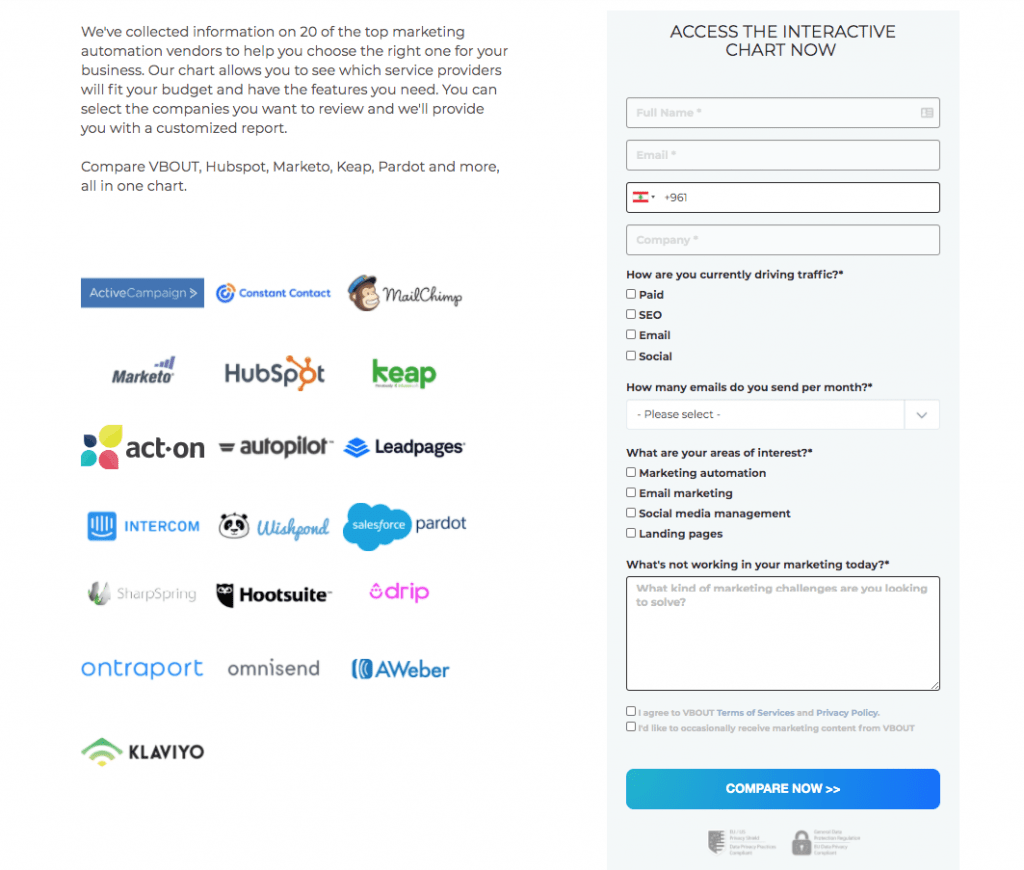
The 3 use cases an effective identity resolution helps solve
1. Analyze end-to-end customer journeys
Some prospects and visitors might be anonymous as they haven’t provided their contact info to the company yet. Therefore, it’s critical to tie the unknown user activity to a user profile once has made herself known.
Without an accurate system that ties unknown and known users, end-to-end customer journey mapping becomes impossible because the connection between anonymous and post-sale activity becomes disconnected.
Therefore, with the right identity resolution, marketers, analysts and product owners can invent new features, optimize site experience and create powerful retention campaigns.
Let’s analyze an example taken from Segment, a customer data platform of how a visitor’s data is combined into a single user profile:
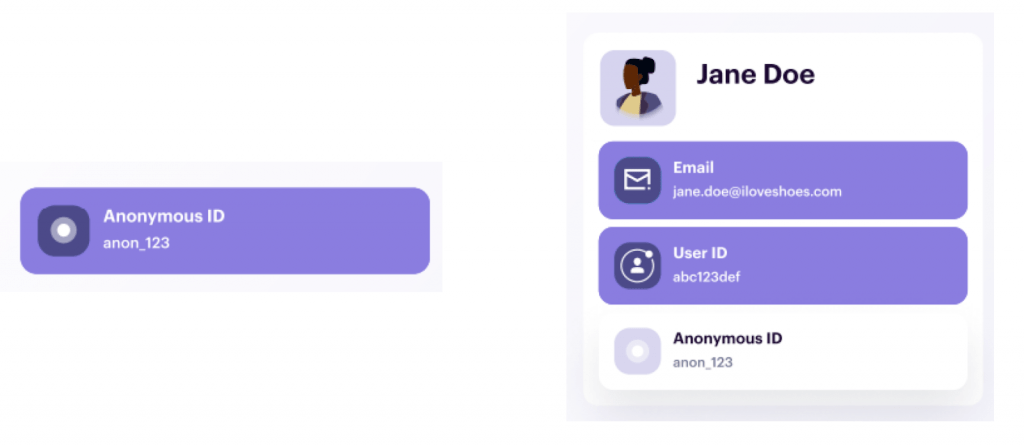 Source: Segment
Source: Segment
For example, let’s say Jane Doe visits the e-commerce site of a hypothetical shoe brand called SegKicks. Like many internet shoppers, she doesn’t create an account, but searches for different categories of shoes—Shoe A, Shoe B and Shoe C— but doesn’t add any of these 3 items to her cart for checkout.
Because Jane hasn’t signed up for an account yet, a new user profile is created with an unknown ID.
Let’s say Jane then decides to add Shoe D to her cart in the same session. At checkout, she completes her purchase order and creates a new account with her email. Now that she’s created an account, her email address and newly assigned user ID are stitched with the previously anonymous user profile.
Thus, instead of having two different user profiles —“logged-out Jane” and “logged-in Jane”— there is only one in the system. Therefore, Jane will have one user profile that can grow with her as she keeps on engaging with the business, regardless of what device or channel she’s using.
As Jane’s customer profile grows over time with additional interactions and purchases, SegKicks is able to power journey analytics and lifecycle campaigns.
2. Optimize your marketing efficiency
A proper identity resolution that stitches together accurate customer profiles in real-time, enables marketers to create high-performing campaigns that save a valuable marketing budget.
According to Gartner, the average brand spends 14% of its entire marketing budget on personalization tactics.
Marketers can initiate powerful omni-channel campaigns when there’s one centralized repository of customer data from all sources.
Whether it’s advertising, email or support centers, marketers can deliver the right message, to the right person at the right time.
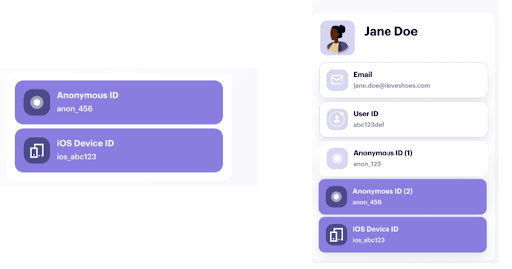
Source: Segment
Back to Jane Doe’s example, let’s say she downloads SegKicks’ companion app “SegRuns” on her phone to track her runs.
This time, a new user profile with an anonymous ID and iOS device ID is created when she first opens the app. In order to start monitoring her activities, Jane signs up for an account using her email address. Because the email address is associated with a SegKicks account, her existing user profile is updated to include this new anonymous ID and iOS device ID from the SegRuns app.
Having this real-time, a cross-channel single view of the customer makes SegKicks marketing campaigns a lot more effective. Now, Jane’s e-commerce events from SegKicks and activity from SegRuns are linked into a single customer profile accessible across channels and devices.
3. Deliver consistent experiences
Customers no longer use a single touchpoint; they rather engage on mobile apps, mobile browsers, desktop and more.
A proper identity resolution allows marketers to create a consistent experience across all their touchpoints. For example, if a user purchases a product on their phone, they shouldn’t see an ad while browsing on their desktop afterwards.
Identity resolution enables companies to unify all their users across devices and channels into one single view of their customer.
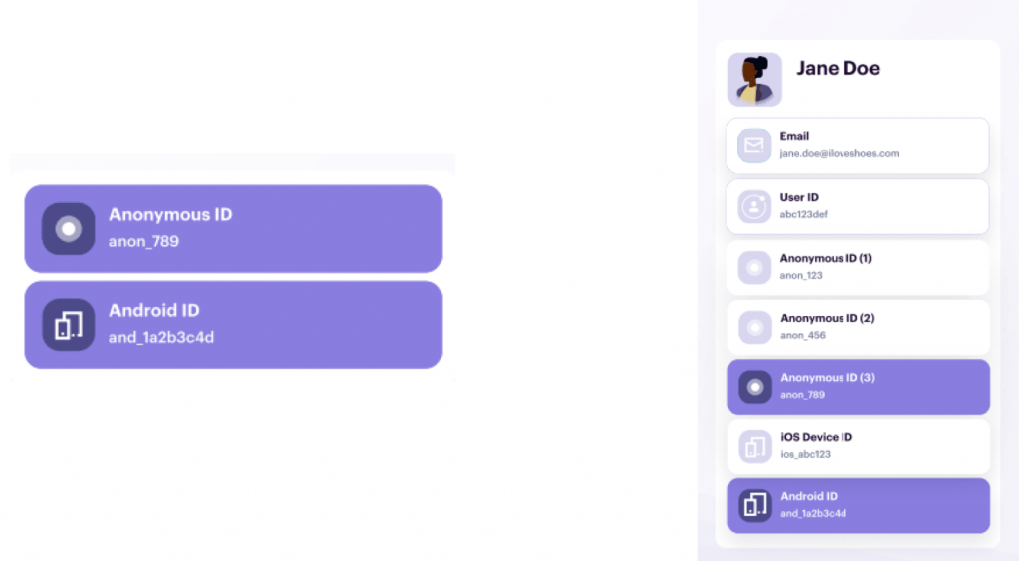
Source: Segment
Now, let’s say Jane would like to know her monthly running activity on SegRuns. Instead of using her phone, she decides to download the app on her Galaxy tablet.
Like before, when she first opens the app, the system would register a new anonymous user with an associated Android ID. Once she signs in to access the app using her email address, her visit would then be authenticated to her existing User ID and email address. As in the previous example, identity resolution would combine the identities, including all traits and behavior, together into one customer profile. No matter what device the visitor is using, Jane is the same user.
With identity resolution, companies can manage and configure cross-device identity management in real-time to deliver a consistent experience, wherever the customer is.
They’ll know not to advertise the SegRuns app to Jane on any device or channel — she’s already downloaded the app. They’ll also know when to send her targeted ads for running shoes; as soon she’s logged 50 miles, SegKicks can automatically suggest she repurchase shoes via email, advertising, or even in the SegRuns app itself.
Company teams can tap into customer data platforms (CDP) to create a personalized customer experience.
This is done through identity resolution, which unify all customer touchpoints across channels, devices, and online and offline activity.
Stitching all data leads to create comprehensive profiles that grow with customers over time.
Don’t forget to share this article
Related articles
Nothing found.